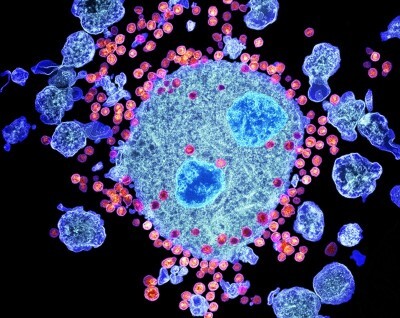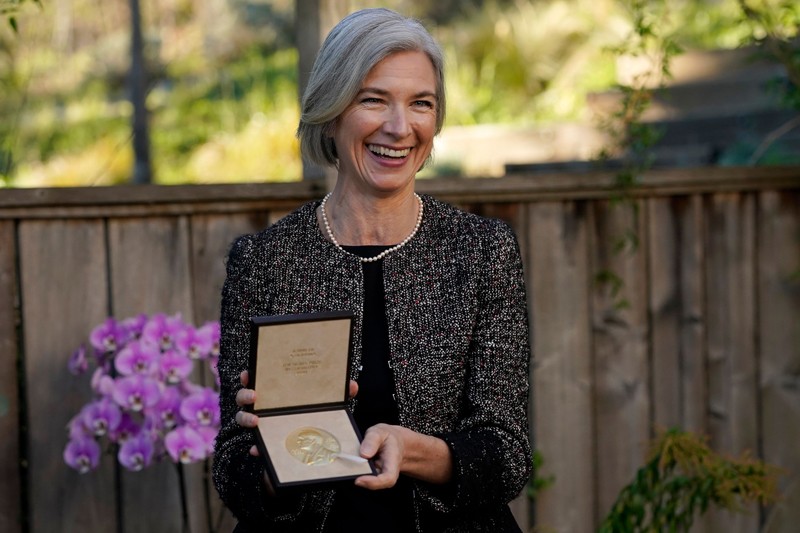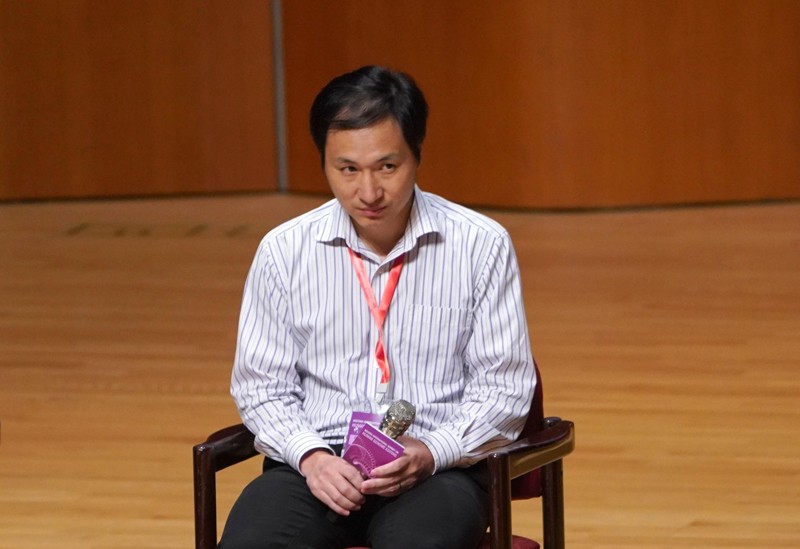


Jennifer Doudna with her Nobel Prize in Chemistry, which she won in 2020.Credit: Jeff Chiu/AP/Shutterstock
CRISPR People: The Science and Ethics of Editing Humans Henry T. Greely MIT Press (2021)
The Code Breaker: Jennifer Doudna, Gene Editing, and the Future of the Human Race Walter Isaacson Simon & Schuster (2021)
What we used to call genetic engineering has been subject to decades of bioethical scrutiny. Then, the arrival of CRISPR — which allows researchers to cut and paste gene sequences with vastly improved accuracy and efficiency — catapulted reassuringly distant science fiction into a pressing reality, and helped to concentrate minds. There’s now enough technical and popular writing on the technology and its ethics to fill many bookshelves.
Given that not even ten years have passed since the first papers showing a practical use for CRISPR in human genome editing, these accounts inevitably go over much of the same territory. The differences are in the authors’ perspectives — broadly enthusiastic about the possibilities of genome editing, or not — and whether the focus is on the discoveries, the ramifications, the personalities involved or some combination. Two new books on the topic differ markedly in reach, style and emphasis. Reading them together gives insight into what the CRISPR story means — for knowledge, for society and for research as an endeavour.
Henry Greely, author of CRISPR People, is a bioethicist with a legal background. His focus is the now-familiar tale of biophysicist He Jiankui’s attempt to change the DNA of human embryos, with the aim of producing the first genetically edited human babies. Greely describes the science, ethics and legal framework of genome editing before CRISPR; how that technology changed the game; what He Jiankui actually did in the laboratory, as far as we know; and how the world responded to the news of the births of genome-edited twins in 2018.
Throughout, Greely is clear that He’s rush to move heritable genome editing into humans was reckless and immoral. Greely condemns the experiment on several grounds, including its prematurity in terms of the knowledge needed to make it as safe as an experimental treatment can be, and for probably failing to obtain adequate informed consent from the twins’ parents. Most damningly, the experiment ignored the scientific consensus that germline genome editing should be used in humans only to treat serious conditions for which there is no other option. He’s goal — inserting a mutation in the CCR5 gene to confer protection against HIV — was pointless because there are adequate and reliable ways to prevent HIV infection and suppress viral disease.
Greely argues that human genome editing isn’t inherently wrong, but it can be under certain circumstances — for instance, if used under coercion or before it’s shown to be reasonably safe, or if it reduces genetic diversity (unlikely) or increases social inequality (quite probable). These chapters rehearse familiar arguments and counterarguments. Where Greely stands out is his clear and detailed discussion of situations in which germline genome editing in humans would actually be necessary. His conclusion, shared with commentators (including me), is that they would be very rare, either because there are good alternatives or because, in the cases that might call for it, genome editing would be unlikely to work at all.
In Greely’s account, all the key players in the CRISPR story are peripheral to the focus on He Jiankui. By contrast, CRISPR pioneer Jennifer Doudna is at front and centre of

He Jiankui, who in 2018 became the first person to edit the genomes of human babies.Credit: TPG/Getty
Shorter chapters, a page-turning narrative and Isaacson’s shaping of the story as a take-no-prisoners race between Doudna–Charpentier and their arch-rivals (primarily Feng Zhang at the Broad Institute and George Church at Harvard University) make this an engrossing read once you get past the breathless style.
Considering them both side by side highlights their distinctive strengths and deficiencies. Unsurprisingly, Greely gives serious weight to the ethical issues; Isaacson does look at them, but in fewer than 50 pages out of nearly 500. Greely genuinely questions whether making changes that can be inherited by future generations is a road we want to go down; that thought doesn’t seem to trouble Isaacson unduly. However, Isaacson shows greater awareness of the difficulties women face in science. He highlights Doudna’s rarity and that she and Charpentier are now role models for girls contemplating a scientific career.
Disappointingly, neither author does more than gesture at the potential exploitation of women as suppliers of eggs for research. Nor do they point out that the kind of broad societal deliberation over the right use of genome editing that pretty much every report on the subject recommends might face insuperable obstacles with our current democratic tools. Françoise Baylis’s
But perhaps the most striking thing about is its unrelenting emphasis on scientific discovery as a competition, a rivalry, a race to be ‘first’. Isaacson does describe collaborative efforts, but I lost count of the number of references to people’s “competitive juices” kicking in, of labs as “cheerfully competitive” or “bitter rivals”, allied to the questionable claim that “what drives people to do good things [in science] is recognition”. Reading this straight after Greely’s soul-searching about what went wrong in the case of He Jiankui, it’s impossible not to conclude that the blame lies less with overweening individual ambition as with an international scientific culture that, as Isaacson says, rewards “provocative research, celebrity, national scientific competitiveness, and firsts”. Doudna might be a role model, but had I read The Code Breaker 30 years ago, I’d have thought twice about committing myself to the values the book describes.
It’s a truism that genome editing offers us tremendous opportunities, some very obvious, others less so. The story of CRISPR told in these books suggests there are reasons to rethink the relationship between the scientific pursuit of knowledge, capital, nationalistic pride and the public good. Beyond that, we need to acknowledge that any future use of human germline genome editing will reflect societal assumptions, often unexamined, about what constitutes a ‘normal’ life. What of disability, illness or imperfection? To what extent can we even agree, globally, on what a good life is? And exactly how far are we prepared to go to achieve it?
